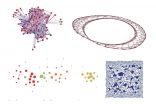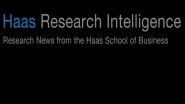Health care lessons learned in the aftermath of September 11, 2001
New case study in the Annals of Global Health assesses the immediate and ongoing response to the 9/11 disaster and explores the implications for future disasters
2014-12-10
(Press-News.org) New York, NY, December 9, 2014 - Fourteen years after the attack on the World Trade Center (WTC), a case study in the current issue of Annals of Global Health identifies several elements that have had a critical impact on the evolution of the WTC response and, directly or indirectly, on the health of the WTC-exposed population. The case study also recounts and assesses post-disaster monitoring efforts, recent scientific findings from the World Trade Center Health Program (WTCHP), and explores the implications of these experiences for ongoing and future environmental disaster response.
Short-term 9/11 rescue and recovery actions have been followed by a long-term monitoring and treatment program, the World Trade Center Health Program (WTCHP), which includes more than 60,000 WTC disaster responders and community members and is now funded by the Zadroga Act of 2010. This program has provided a framework for understanding the variable consequences of the WTC disaster, ensuring that lessons learned can be identified and incorporated into improved long-term programs.
Reauthorization of the Zadroga Act by Congress will ensure that these observations will have an opportunity to translate into a meaningful and sustainable clinical and research impact. Reauthorization is also crucial to ensuring that all responders and survivors of the World Trade Center disaster have continued access to World Trade Center Clinical Centers of Excellence, where the needs of responders and survivors are understood and necessary expertise and healthcare are available to all those exposed to the disaster.
"We have identified key elements of the WTC response that have affected the health of the exposed population and ongoing population monitoring and treatment," comments lead author Michael Crane, MD, MPH, of the Icahn School of Medicine at Mount Sinai. He and his co-authors call attention to the failure of government agencies to address widespread contamination of the local community. Residents were consequently exposed to the risks of toxic exposure. Responders also were put at risk by the failure of responsible agencies to enact and coordinate strict site health and safety policies during recovery and cleanup operations.
The case study provides insights into the many interconnected elements that determine the effectiveness of any public health disaster response. Among these are:
Clinical Expertise and Data Collection - Putting experts on the scene who can recognize ongoing threats to health, record critical data, and institute essential monitoring programs.
Site Safety and Worker Training - Lack of these measures caused lasting effects on the health of untrained responders in the WTC environment.
Attention to Vulnerable Populations - Certain groups, such as schoolchildren from the area and children indirectly exposed through their own exposed parents, can be overlooked in the chaos of a large-scale disaster.
Developing Trust and Transparency - The value of trust and transparency between the exposed populations and the public health authority in environmental disasters is well established and critical, but often not achieved.
According to the authors, operationalizing these ideals amidst the initial chaos and longer-term bureaucratic challenges that are an integral part of any disaster remains a daunting but essential mandate. They conclude that "Even in a relatively well-resourced environment, challenges regarding allocation of appropriate attention to vulnerable populations and integration of treatment response to significant medical and mental health comorbidities remain areas of ongoing programmatic development."
INFORMATION:
ELSE PRESS RELEASES FROM THIS DATE:
2014-12-10
The global spread of Ebola is due to the complex interactions between individuals, societies, and transportation and trade networks. Understanding and building appropriate statistical and mathematical models of these interactions is vital to responding to the challenges of living in a networked world. There are, of course, many other examples of complex networks -- from national power grids and airline networks to social networks, neuronal networks and protein-protein interactions.
In a new study published in the Beijing-headquartered journal National Science Review, ...
2014-12-10
This news release is available in Japanese.
New research published in the Proceedings of The Royal Society A by members of the Mathematical Soft Matter Unit at the Okinawa Institute of Science and Technology Graduate University examines the energies at work in a closed flexible loop spanned by a soap film. While the underlying experiments are simple enough to be replicated in a kitchen sink, the research generates potentially important questions and changes how we think about different disciplines from material science to vertebrate morphogenesis. Aisa Biria and Professor ...
2014-12-10
UNIVERSITY OF CALIFORNIA, BERKELEY'S HAAS SCHOOL OF BUSINESS -Too many vehicles on the highway inevitably slow down traffic. On the Internet information highway, consumers value high-speed Internet service, but there is little reason to think broadband traffic congestion will improve if the Federal Communications Commission abandons net neutrality, according to economic research.
In their paper, "The Economics of Network Neutrality," Ben Hermalin, Haas Economics Analysis and Policy Group, and Nicholas Economides, Berkeley-Haas visiting professor from NYU'S Stern School ...
2014-12-10
Scientists at the University of Strathclyde and City University of New York have created methods that dramatically simplify the discovery of biological gels for food, cosmetics and biomedicine, as published in the journal Nature Chemistry.
Strathclyde's Dr Tell Tuttle and Professor Rein Ulijn, the director of nanoscience at City University New York's new advanced research centre who also holds a position at Strathclyde, believe their team's breakthrough dramatically simplifies discovery of functional gels that can be used in a wide range of applications.
Until now, ...
2014-12-10
The drug daclatasvir (trade name Daklinza) has been available since August 2014 for the treatment of adults with chronic hepatitis C (CHC) infection. The German Institute for Quality and Efficiency in Health Care (IQWiG) examined in a dossier assessment whether this new drug offers an added benefit over the appropriate comparator therapy.
The drug manufacturer presented data for patients without cirrhosis of the liver who are infected with hepatitis C virus (HCV) genotype 1, and for patients with HCV genotype 4. However, these data are unsuitable in various aspects to ...
2014-12-10
Pioneering new research by the University of Exeter could revolutionise global diagnostic procedures for one of the most common forms of epilepsy.
Scientists from Exeter have investigated using mathematical modelling to assess susceptibility to idiopathic generalised epilepsy (IGE) by analysing electrical activity of the brain while the patient is in a resting state.
Current diagnosis practices typically observe electrical activities associated with seizures in a clinical environment.
The ground-breaking research has revealed differences in the way that distant regions ...
2014-12-10
"A tree must be bent while it is young," as one saying about learning a foreign language goes. In other words, the earlier you start learning a foreign language systematically, the better the language level will be in the long run. The second widely held view is that you need to be solid in your first language (L1) in order to develop good literacy skills in the foreign language. Linguist Simone Pfenninger from the University of Zurich has been examining these two myths in her five-year study involving Swiss high-school children in order to identify the optimal starting ...
2014-12-10
Reston, Va. (December 9, 2014) - Cancer therapy can be much more effective using a new way to customize nuclear medicine treatment, researchers say in the December 2014 issue of The Journal of Nuclear Medicine. The process could also be useful for other diseases that could benefit from targeted radiation.
Targeted therapy with radiopharmaceuticals--radioactive compounds used in nuclear medicine for diagnosis or treatment--has great potential for the treatment of cancer, especially for cancer cells that have migrated from primary tumors to lymph nodes and secondary organs ...
2014-12-10
London, United Kingdom, December 9, 2014 - As the Ebola Virus Diseases (EVD) epidemic continues to rage in West Africa, infectious diseases experts call attention to the striking lack of treatment guidelines. With over 16,000 total cases and more than 500 new infections reported per week, and probable underreporting of both cases and fatalities, the medical community still does not have specific approved treatment in place for Ebola, according to an editorial published in the International Journal of Infectious Diseases.
Not only are treatment guidelines lacking, but ...
2014-12-10
Studying the social interaction of bears through the use of camera traps and visual observations requires that humans be able to tell individuals apart. A study done using volunteers to study the vulnerable Andean bear indicates that people can learn to identify individual bears, given a little practice. The research, done by San Diego Zoo conservationists with international collaborators using photos spanning many years, also indicates that young bears usually retain many of their unique markings as they grow older.
"Knowing, scientifically, that people who have been ...
LAST 30 PRESS RELEASES:
[Press-News.org] Health care lessons learned in the aftermath of September 11, 2001
New case study in the Annals of Global Health assesses the immediate and ongoing response to the 9/11 disaster and explores the implications for future disasters


